Environmental Science and Animal Behavior students get rare opportunity to experience a bear up close
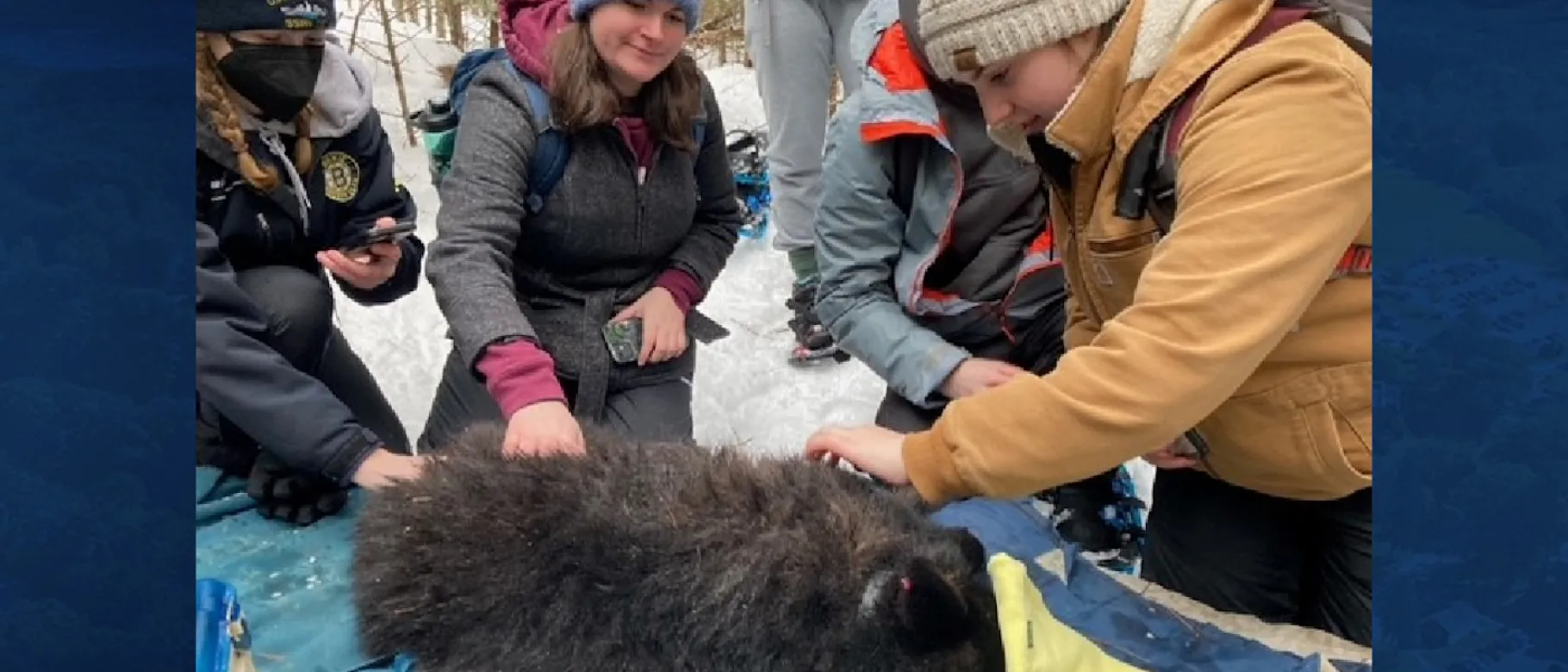
After setting out before dawn, traveling three and half hours north, and trekking through the woods in snowshoes, a trip to a bear den by students in Noah Perlut’s Terrestrial Wildlife lab was almost a major disappointment. Instead, it turned out to be a rare and fascinating experience.
When checking in on the bears, wildlife biologists from the Maine Department of Inland Fisheries and Wildlife (IFW) will approach the den and tranquilize the bears inside. This time, things did not quite go as planned.
“The female and her cubs ran off,” explained Perlut, Ph.D., professor and assistant academic director in the School of Marine and Environmental Programs. “We were all quite disappointed. It seemed like we would not see bears.”
Then, one of the IFW wildlife biologists spotted the cubs.
“They were at the top of a 50-foot tree,” stated student Cameron Indeck (Environmental Science, ’22). “We all came to the realization that this may be the closest we get to a cub.”
“I was just happy to see a bear den up close,” said student Nicole Corriveau (Environmental Science, ’22). “I was ecstatic that I was seeing the bears up close in the tree and even more excited when one cub started climbing down.”
As the cub inched down the tree closer to the ground, the IFW wildlife biologist was able to tranquilize it, giving the students the up-close experience they were hoping for.
“We were able to examine, touch, and pet the tranquilized yearling, which was amazing,” Corriveau commented. “I got to feel her insanely thick fur, sharp nails, and long teeth.”
The students watched as the IFW crew measured the 45-pound yearling cub and attached a radio collar to her. For more than 40-years, IFW has monitored the health of Maine’s bear population, making it the longest running study of its kind in the country.
“The goal of the study is to understand female and cub survivorship and how factors such as food, development, and hunting affect that survivorship,” said Perlut.
The students say the trip confirmed for them that things do not always work out as planned when out in the wild.
“It taught me that conservation is just as difficult as it seems,” Indeck said.
Corriveau added, “It was awesome to see how members of the bear crew from IFW quickly responded to the constantly changing factors in the woods. I also learned a lot more about IFW, an agency that I really want to work for one day.”
Both students say it was an experience that they will not soon forget.
“At the end of the day I couldn't stop telling my roommates, friends, and teammates about how awesome this trip was,” Corriveau said.
“It was a rollercoaster of an experience and definitely once in a lifetime,” Indeck exclaimed. “I will be talking about this trip forever.”
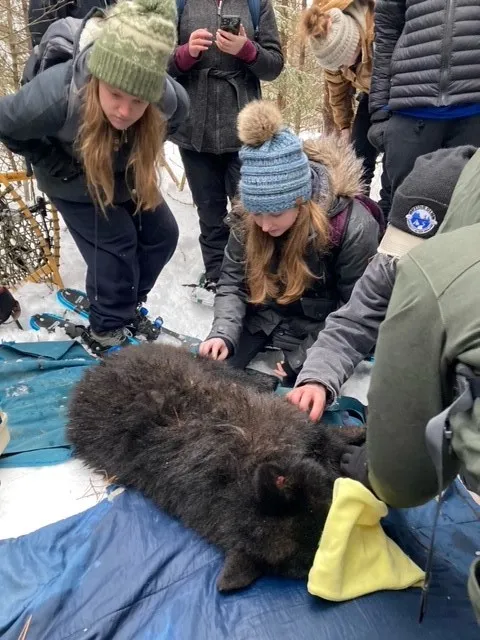
Students Kelsie Schwantner and Megan Lupinski examine the bear cub
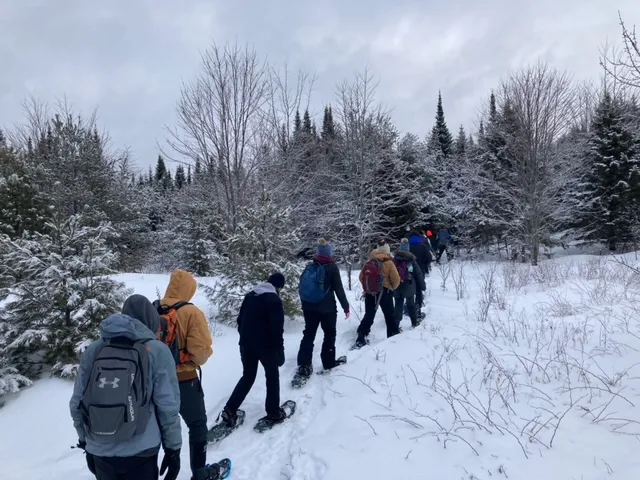
Students snowshoe to den
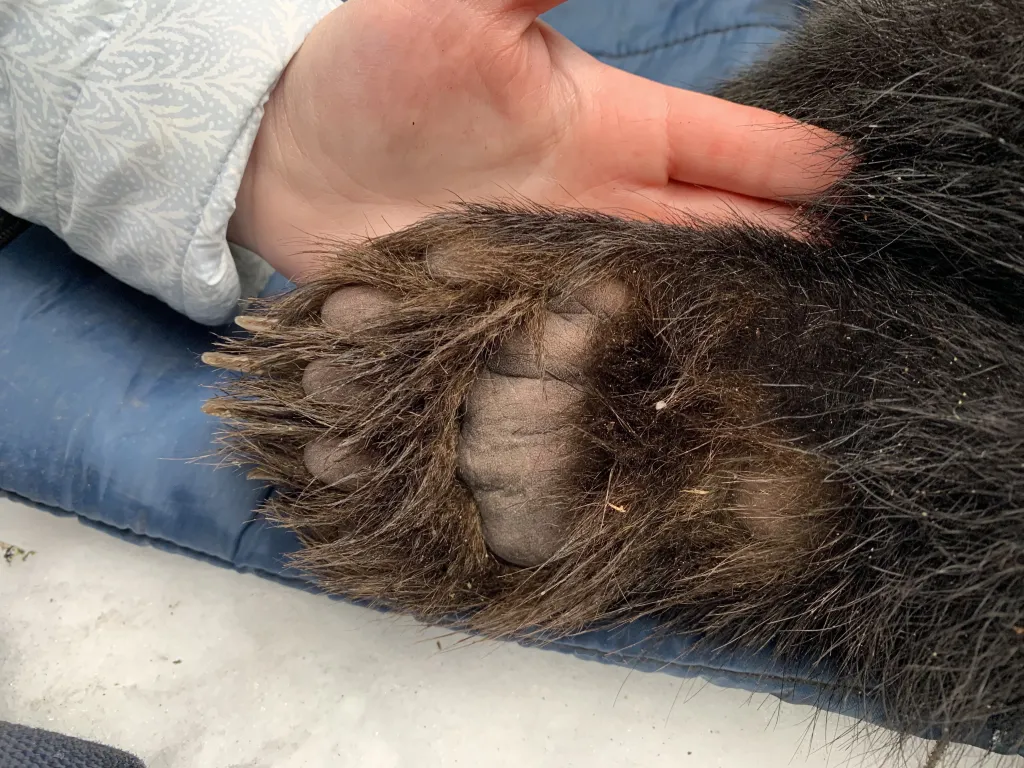
Nicole Corriveau's hand next to paw
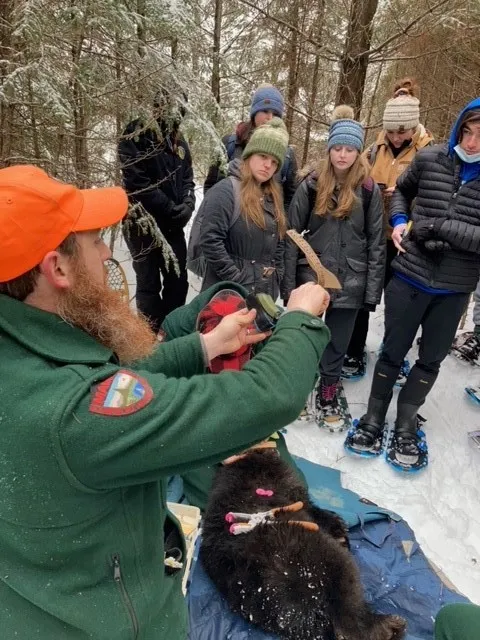
IFW biologist shows students a radio collar